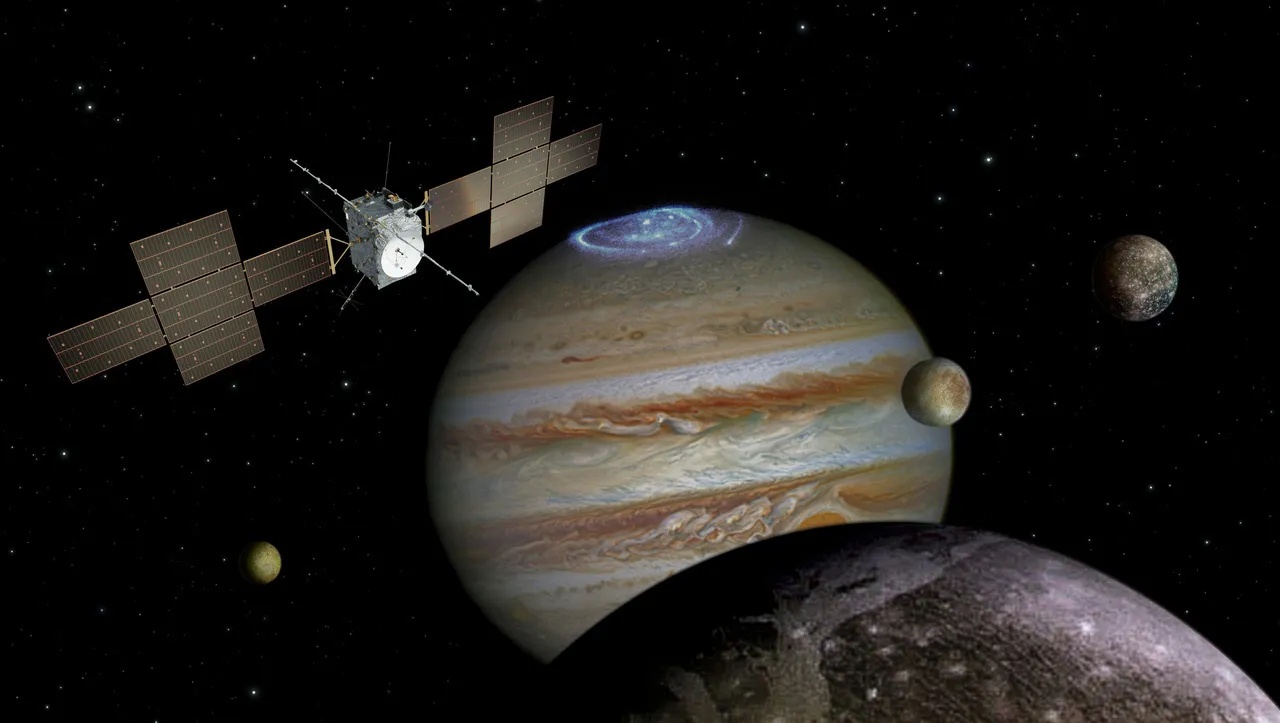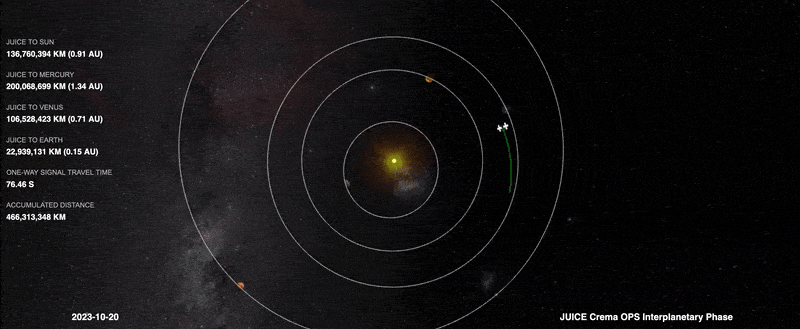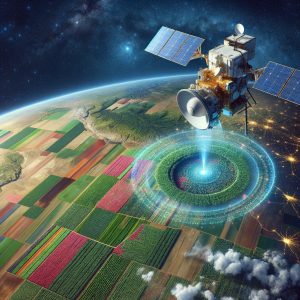JUICE Burns 10% Fuel Capacity To Alter Orbit
21st Nov 2023
The European Space Agency (ESA) has just performed an integral manoeuvre to alter the orbit of their JUICE spacecraft. JUICE – Jupiter Icy Moons Explorer – was launched in April this year onboard ESA’s Ariane-5 rocket. Its mission: to survey Jupiter and its icy Moons, and uncover whether they can support life.
The satellite experienced a shaky start to the mission when its antenna failed to break free from its mounting bracket. However, JUICE is now back on track, and on 17th November performed a trajectory-altering manoeuvre. The accompanying burn consumed 10 percent of its fuel capacity to change its orbit around the Sun and to prepare for its 2024 return to Earth.
ESA commented in a statement: “Investing this fuel now to line Juice up for next summer’s double flyby will pay off for years to come.” JUICE’s UVS instrument has already collected UV data, successfully validated the satellite’s spectrograph. The remaining instruments will be deployed over the course of the eight-year mission.
JUICE’s Manoeuvre

ESA documented that on 17th November, 10 percent of the satellite’s fuel had been spent in “just 43 minutes” in order to perform a ‘two-part manoeuvre’. This burn adjusted JUICE’s orbit around the Sun, and to “set it up for its return to Earth in 2024,” ESA said. Interestingly, the return will engender a novel Lunar-Earth Gravity Assist, whereby JUICE will be slung past the Earth’s Moon. From there, JUICE will use the Moon’s gravity to shoot itself past home one-to-two days later.
Performing Flybys
ESA indicated on their website that JUICE will perform 35 “jovian Moon flybys”. Ultimately, this is where the recent manoeuvre has been essential. ESA said: “to get the most out of the flybys, Juice must arrive at planet or Moon travelling at exactly the correct velocity and in the correct direction.”
Therefore, altering JUICE’s trajectory to better align with each Moon means less fuel will be consumed when executing a flyby. Primarily, this is due to the satellite utilising the moons and Jupiter’s gravity to sling itself from one moon to the next. Equally, that gravity provides the energy JUICE needs.
What Is JUICE Aiming To Achieve?
According to ESA, JUICE will observe Jupiter and its three largest icy moons: Europa, Ganymede and Callisto. Ganymede – and Saturn’s Titan – have been frequently studied as of late, due to their oceans possibly containing life-forming elements. To assist in scientific endeavour JUICE will use its array of “remote sensing, geophysical and in situ instruments” to make “detailed observations” of Jupiter, ESA said. Those observations being, to distinguish whether the Moons are ‘planetary objects’ or ‘possible habitats’, ESA added. JUICE will also explore Jupiter’s environment and “study the wider Jupiter system as an archetype for gas giants across the Universe,” ESA concluded.







Thank you for your comment! It will be visible on the site after moderation.